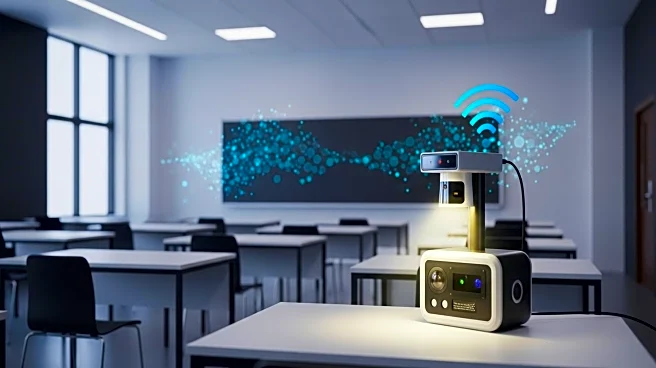What's Happening?
A recent study highlights the importance of monitoring and managing indoor air quality in classrooms using IoT-driven systems. The research emphasizes the role of effective ventilation systems, air filters, and low occupant density in maintaining high air quality. The study, conducted in a Computer Science block, utilized an IoT-based device to track indoor dust and air quality index, collecting data over 25 days. The device, equipped with sensors like MQ135 for gas detection and GP2Y1014AU0F for dust measurement, provided insights into pollution levels. Hierarchical cluster analysis was used to categorize indoor spaces into low, moderate, and high pollution groups, based on particulate matter and air quality index levels. The findings underscore the need for regular monitoring to ensure a healthy learning environment, which is crucial for cognitive health and academic performance.
Why It's Important?
The study's findings are significant as they highlight the direct impact of indoor air quality on student health and academic performance. Poor air quality can lead to cognitive issues such as fatigue and decreased performance, affecting students' ability to learn effectively. By implementing IoT-driven air quality management systems, educational institutions can ensure a healthier environment, potentially improving student outcomes. This approach also aligns with broader trends in air quality management, which have seen improvements in regions like Europe and parts of North America. However, challenges remain in low-income areas where foundational air quality monitoring systems and cleaner technologies are needed. The study advocates for the adoption of advanced monitoring systems to address these disparities and promote better health and educational outcomes.
What's Next?
The study suggests that educational institutions should prioritize the implementation of IoT-based air quality monitoring systems to maintain optimal indoor environments. This could involve investing in cost-effective, portable devices and developing web applications for data collection and analysis. Additionally, institutions may need to consider upgrading ventilation systems and air filters to reduce pollution levels. As awareness of the importance of indoor air quality grows, there may be increased demand for such technologies, driving innovation and development in this field. Policymakers and educational leaders could play a crucial role in promoting these initiatives, potentially leading to widespread adoption and improved health outcomes for students.
Beyond the Headlines
The study raises ethical considerations regarding the responsibility of educational institutions to provide safe and healthy learning environments. It also highlights the potential for IoT technology to transform traditional approaches to air quality management, offering more precise and actionable insights. As these technologies become more accessible, there may be broader implications for public health policy and environmental standards. The integration of IoT systems in schools could serve as a model for other sectors, demonstrating the value of data-driven approaches to environmental management.













